by GaryG
High in the northeast corner of the Swiss canton of Neuchâtel, near the French border, sits the watchmaking city of La Chaux-de-Fonds.
High enough, in fact, that the local residents can boast that their city is the highest in all of Europe; in true Swiss style, the tips of the trees on its main avenue are trimmed so they measure to a precise altitude of 1,000 meters above sea level.
From a timekeeping perspective, there’s much to appreciate as well: among others, Greubel Forsey calls the area home. The city is also home to the MIH, the renowned international horological museum previously curated by Ludwig Oechslin (see Ludwig Oechslin Retires As MIH International Museum Of Horology) Curator And Director). If you haven’t been there to visit yet, I strongly recommend it.
There are also some lesser-known time-related establishments in town, among them a fairly modest vintage watch shop known to the Patron, a charter member of our traveling crew of watch enthusiasts. To meet this fellow and the rest of our gang, see Collectors Speak: Picks and Pans Of SIHH Week 2015.
Every January, as our travels took us through the vicinity, he would rave about this tiny shop and its treasure trove of unusual watches, among them (so he claimed) some very interesting prototypes and student watches.
This past winter, we considered visiting it after our day at Greubel Forsey, but the shop was closed. The Patron, however, was not to be dissuaded and stayed on for an extra day after the rest of us departed to check out the potential treasures for himself.
Sometimes persistence pays off! After a few well-placed questions, the shopkeeper brought out a relatively innocent looking skeletonized pocket watch – the one that you see here. With a wry smile, he suggested that the Patron take a look at the tiny lug that you see at the bottom left corner of the photo below, leaving my friend flabbergasted.
Yes, that’s right: “G.N. Papi No.1” is a clear reference to the legendary watch industry figure who leads Audemars Piguet Renaud & Papi and who has been involved in the development of many of the landmark watches of this generation, both for AP and for other brands.
Or was it?
Certainly my friend could be excused a moment’s doubt: might there have been more than one G.N. Papi out there in the world of watchmaking?
Another sly grin and the shopkeeper presented a simple, hand-written document.
This letter, signed “in good faith” on September 3, 1984 in La Chaux-de-Fonds, provides a detailed description of the watch that the Patron brought back to California with him and allowed me to photograph and share with you here.
The watch was constructed during the period between August 6 and 30, of 1984. Papi himself performed the skeletonization of the base Unitas 6497 movement, which he then had engraved by P.A. Walter. When the movement work was completed, Giulio housed the watch in a silver pocket watch case made by Monnier.
Front, back, and close up
Let’s take a complete look at this piece, starting with the front of the watch.
My overall verdict: pretty nice! I’m a big fan of skeletonized watches (for more on that, read Why I Bought It: Vacheron Constantin Malte Squelette) and this one is skeletonized within an inch of its life. Just look at how fine the remaining bridges and connective tissue of what started as plates are and you can get a sense of the thought that went into the carving work done by Papi.
For me, the underlying structure of the movement, further revealed by the skeletonization, is quite pleasing as well with its basic symmetry and long lines that draw the eye.
If anything, the reverse side is cleaner still. Without the hands and jeweled hour markers to distract us, we can get a real appreciation for the structure of the movement. I particularly like the vertical array of wheels and how it plays off against the slightly diagonal arrangement of the barrel, center wheel, and balance.
All in all, I could imagine spending many happy hours peering at this side of the watch, not even caring what time it was!
The closer we get, the more clearly we realize that this was a very early effort in a master watchmaker’s career. Some levers and wheels appear virtually unfinished, the slots on the otherwise blued screw heads are still chrome plated, and the setting of the hour markers is somewhere between refreshingly simple and rustic.
The watch also needs a thorough service and shows some markings on the components that may well have been made long after the making of the watch, but I can hardly blame Giulio for that!
Ready to wear
Happily enough, the wearer of this watch usually won’t be viewing it at a zillion times magnified, the way that it appears in macro photographs, so the experience will be a lot more about the overall appearance of the piece and the special feeling of owning the “number one” from one of today’s most distinguished watchmakers.
To provide a sense of what that experience might be like, I paired the G.N. Papi No.1 with a vintage silver-plated brass pocket watch chain left to me by my grandfather.
I particularly like this chain because it can be threaded over one’s belt, lending some real security and at the same time keeping the watch ready for use. I have some fairly simple pocket watches from Grandpap, and this chain really suits them. I think it matches up well with the Papi watch, too.
What was the story behind this watch? How did he decide on this specific design and combination of features? What challenges did he have to overcome in its making? And, finally, how does this particular piece fit into the broader scope of his career and development as a watchmaker?
At the moment I do not have the answers to share. Just as this watch sat hidden in a small vintage shop until my friend brought it to light, the secrets behind its creation are still in the shadows.
I’m hopeful that I will be able to share the deeper story behind this fascinating watch with you soon.
Trackbacks & Pingbacks
-
[…] To find out about the very first watch that Papi ever made and see breathtaking photography of it, please see Exclusive: The Giulio Papi No. 1 Pocket Watch. […]
-
[…] “Skeletonized within an inch of its life” http://t.co/vBOW3O2ec6 Giulio Papi’s first pocke… […]
-
[…] Previously, I had the wonderful opportunity to report on an important and previously unknown watch: the “G.N. Papi 1” pocket watch made by Giulio Papi and now owned by a good friend of mine (for the full story see Exclusive: The Giulio Papi No. 1 Pocket Watch). […]
-
[…] hold, and photograph, some very special watches, including the Giulio Papi No. 1 pocket watch (see Exclusive: The Giulio Papi No. 1 Pocket Watch and Reunited: Giulio Papi And The G.N. Papi Number 1 Pocket Watch); the very first F.P. Journe […]
Leave a Reply
Want to join the discussion?Feel free to contribute!

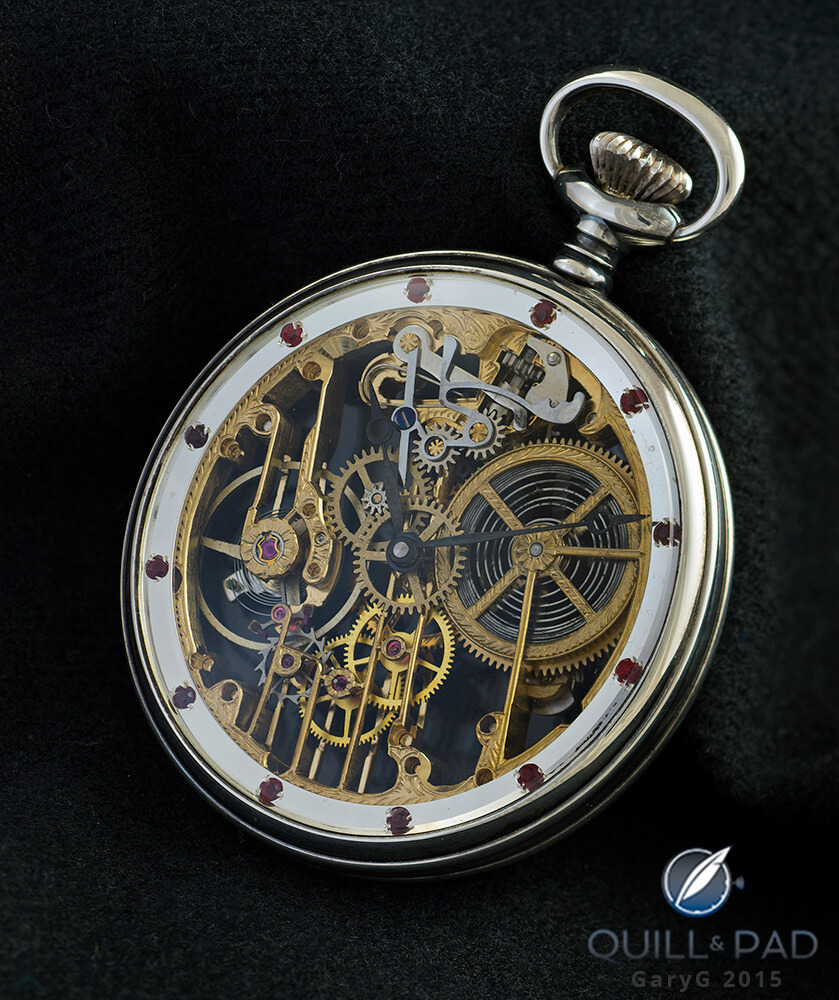
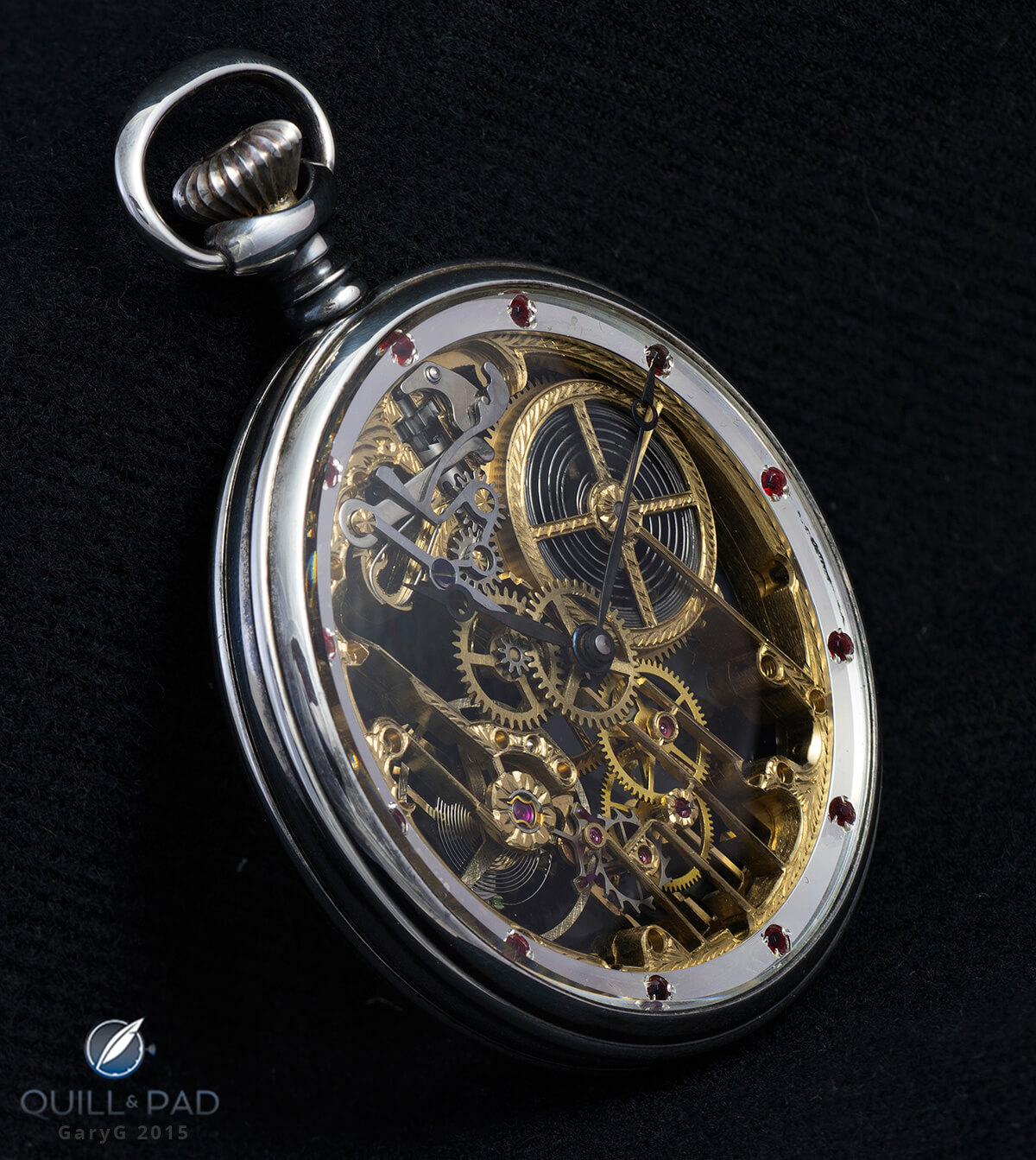
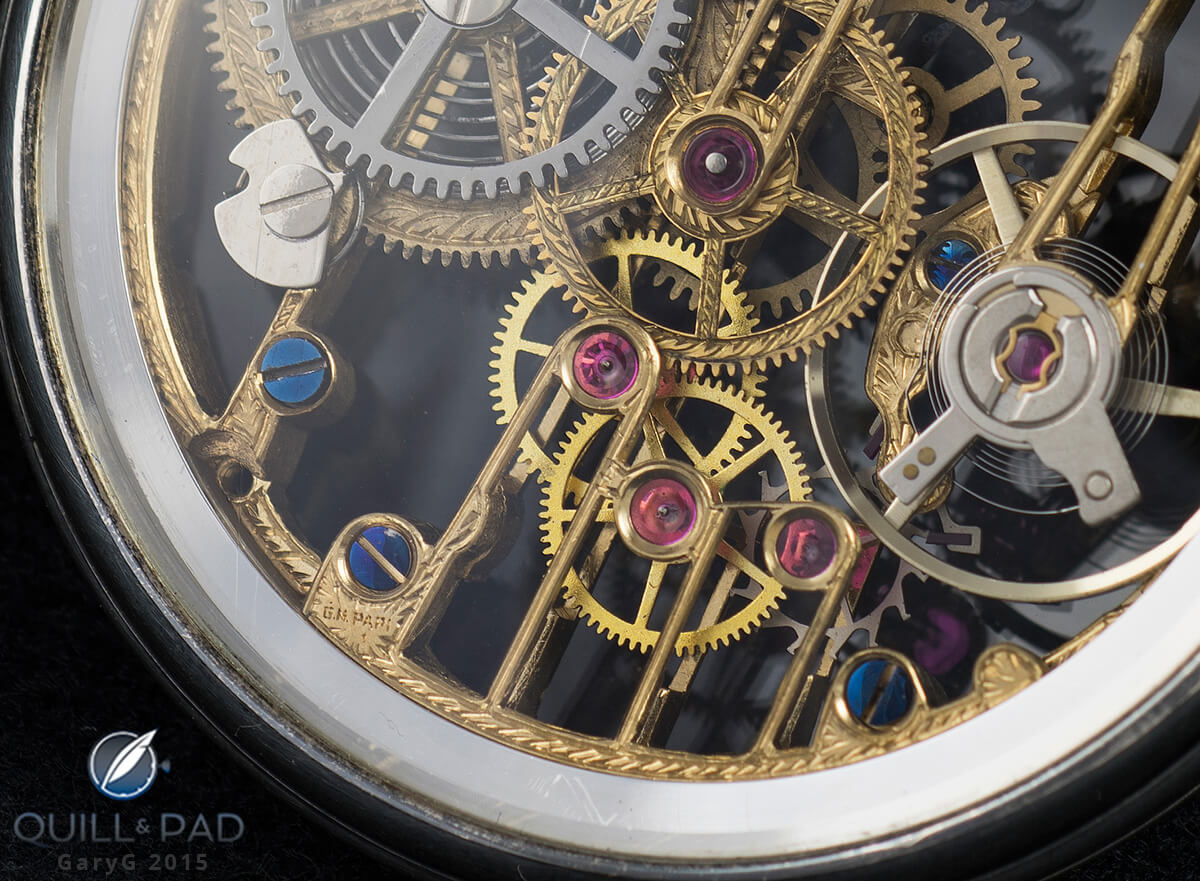
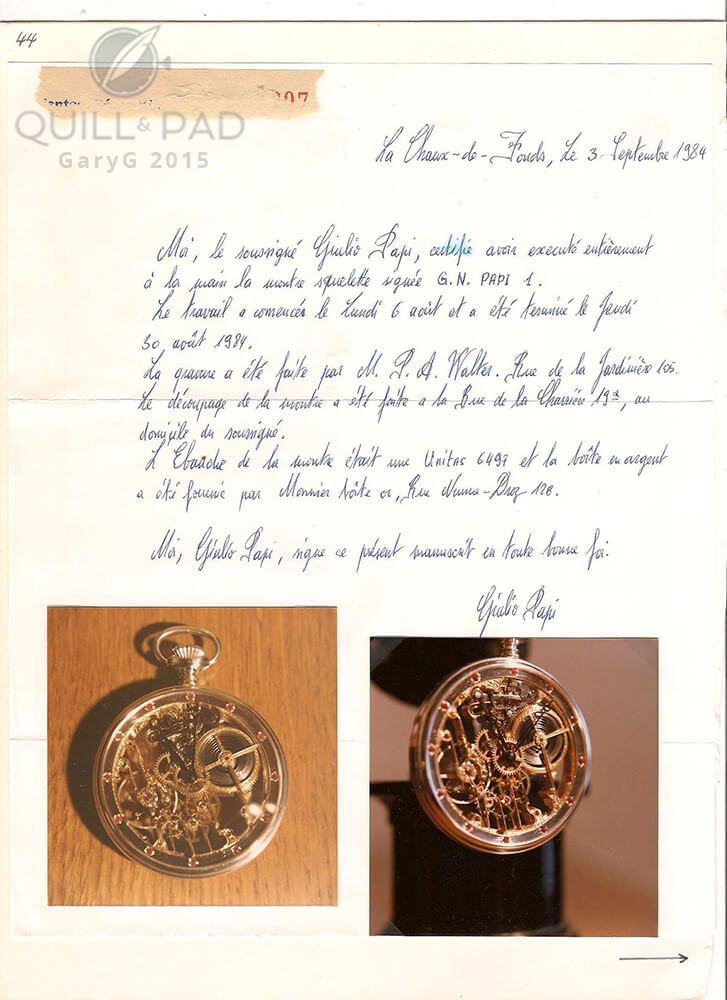
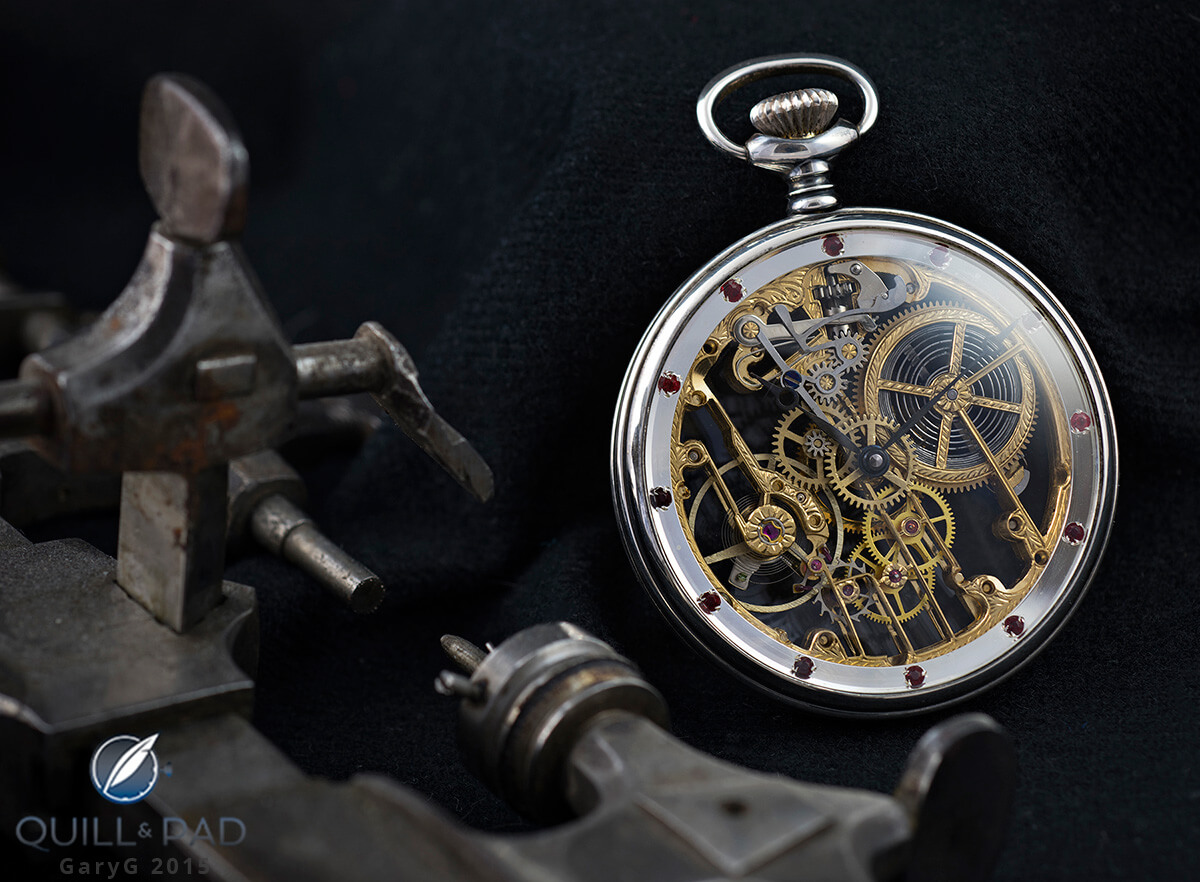
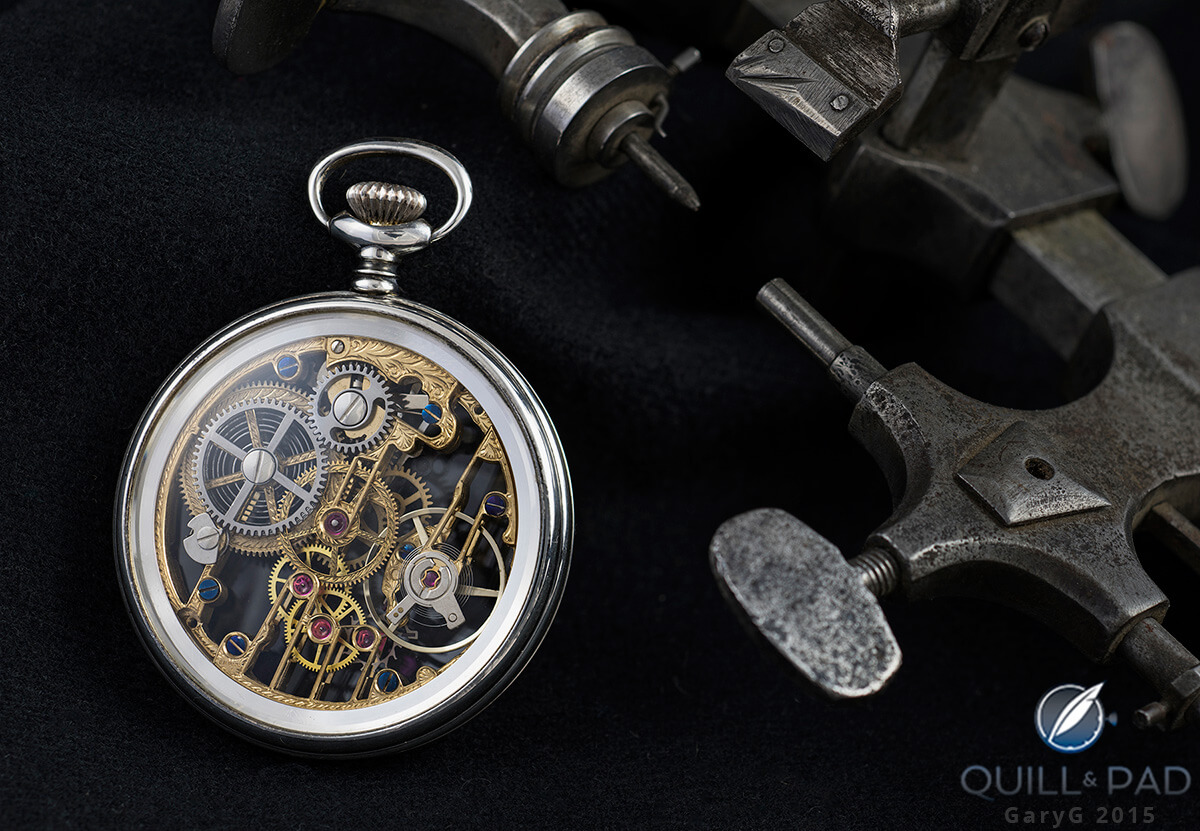
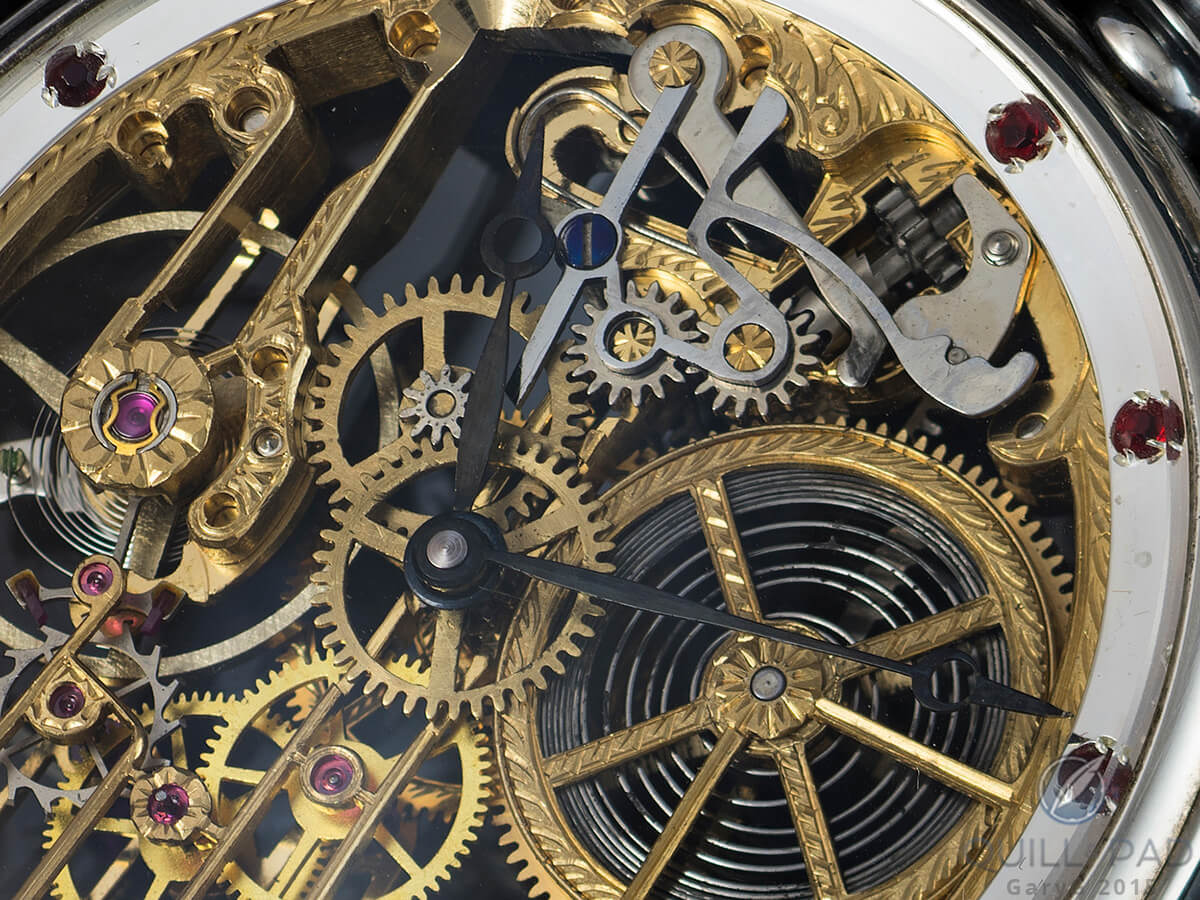
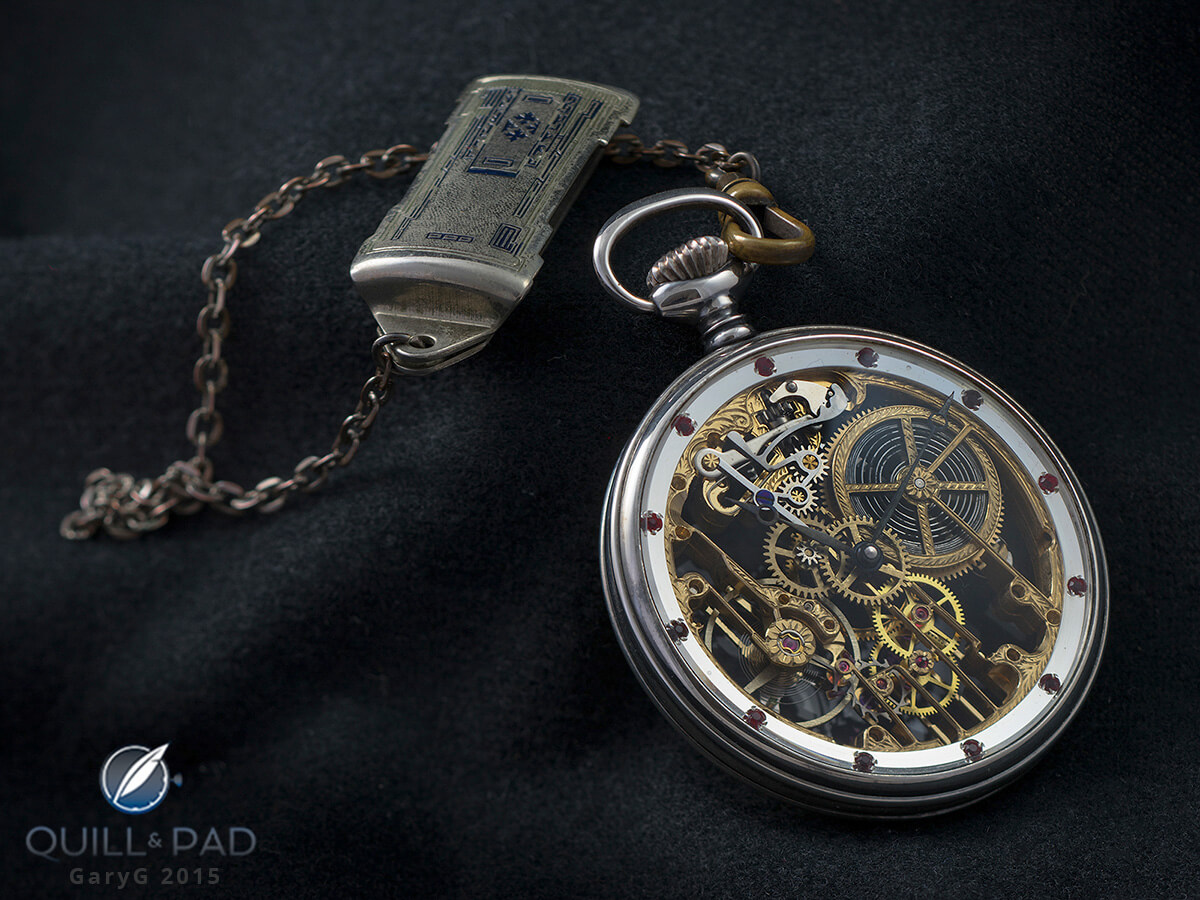
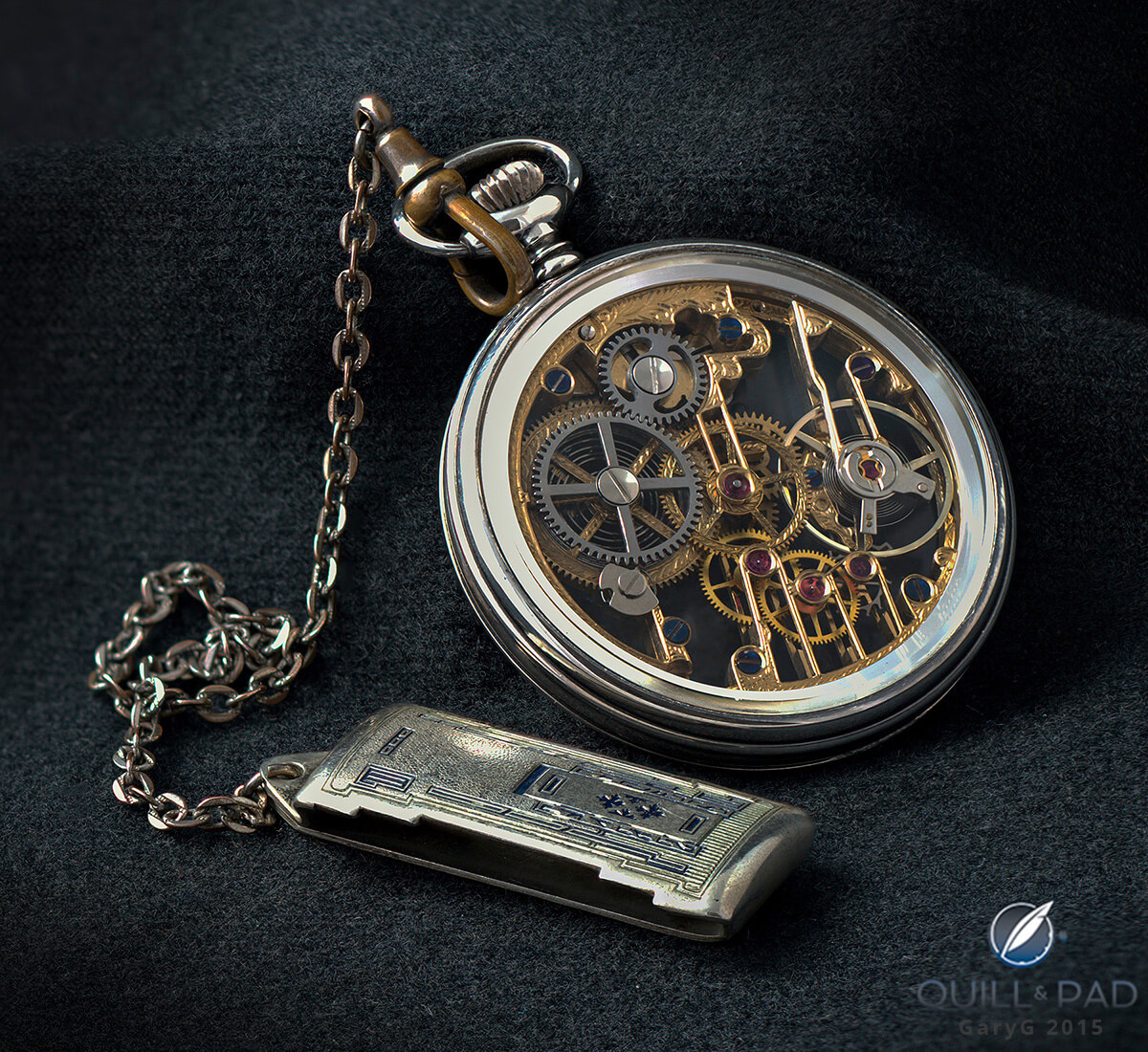
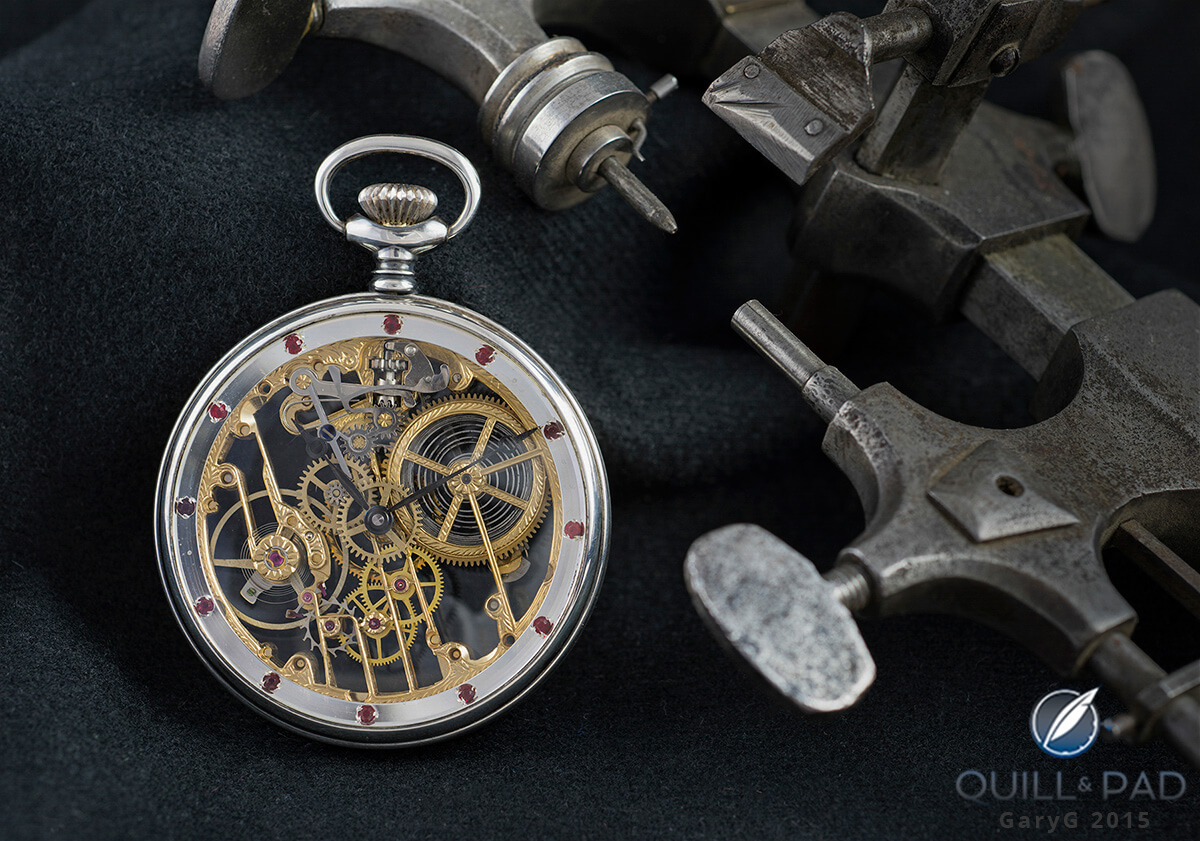
Looks like a watchmaking student project
Thanks for your note! This does indeed look like it might have been a student project, but what I find interesting is that the provenance paperwork doesn’t make any reference to a watch school or related project.
We will report more as we have it!
Amazing story Gary! I simply love how elegantly thin those skeletonized bridges are, with subtle decorations yet still stong enough to hold the force of the watch as it flows through the movement. Absolutely stunning!
Glad you enjoyed it, Martin, and many thanks for commenting here! As you may know I’m a big fan of openworking, and so it’s no surprise that I love this piece as well.
Best,
Gary
Call me crazy, but I love the imperfectly finished look of this piece. Similarly, I am smitten by the work of J.B. Viot and the unrefined nature of his creations. Of all of F.P. Journe’s serialized tourbillon, it is his first example which I find most beautiful.
Great points, Wicket! I’d kill (well, almost) for one of those first three very rough FPJ prototypes, and I also drool over my buddy’s No. 3/20 “Subscription” piece every time I see it.
I start looking at the picture before reading the article. In my mind was born a question: what kind of Dr Jekyll and Mr Hyde work is this? It’s a combination of brutal force and pure precision. Looks like an obsession, a quick and dirty job that must be done. I love skeletonised watches and usually they are perfect. But this… this is full of beautiful imperfections and mistakes. Absolutely gorgeous. Thanks for the great pictures and article.